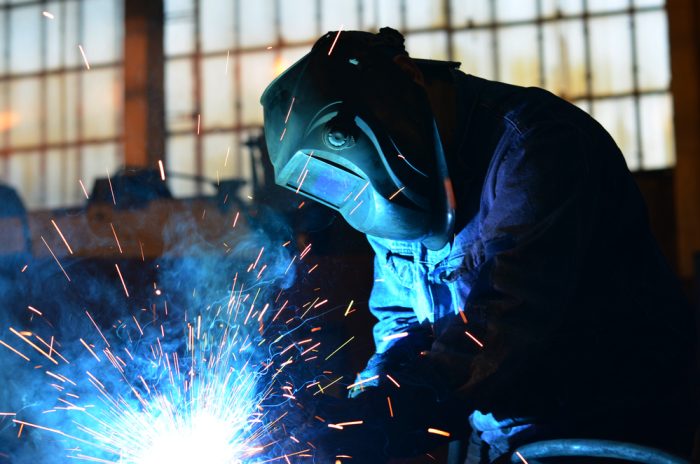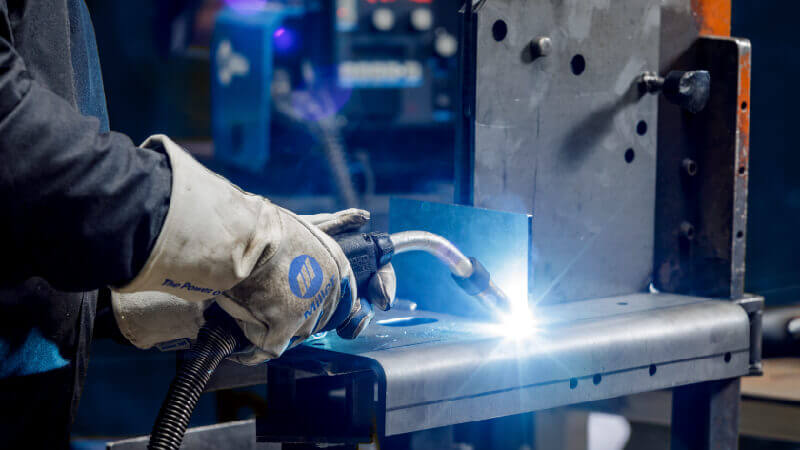All Regarding Welding: Secret Insights Into Techniques and Finest Practices for Success
Welding encompasses a range of methods, each fit for certain products and applications. Comprehending these approaches, such as GMAW, SMAW, and TIG, is important for achieving ideal outcomes. Furthermore, the appropriate tools and security techniques can not be neglected. As prep work and fixing play crucial roles in the welding procedure, grasping these elements can significantly enhance the top quality of the end product. What are the crucial factors that guarantee an effective weld?
Understanding Various Welding Techniques
Welding techniques include a selection of approaches, each suited to specific applications and products. Among one of the most typical techniques are Gas Metal Arc Welding (GMAW), Protected Metal Arc Welding (SMAW), and Tungsten Inert Gas Welding (TIG) GMAW, additionally referred to as MIG welding, is preferred for its rate and convenience, making it perfect for slim materials. SMAW, or stick welding, is preferred for its simplicity and efficiency in outdoor environments, particularly with thicker steels. TIG welding provides accuracy and control, making it suitable for intricate job and non-ferrous metals (Welding). Each strategy has its distinct benefits and factors to consider, allowing welders to pick the finest method based on the project's requirements, material type, and preferred outcomes. Comprehending these techniques is important for successful welding
Vital Welding Tools and Devices
While numerous welding techniques need details abilities, the right devices and tools are equally important for accomplishing top quality results. Essential welding devices includes welding devices, which vary depending on the method-- such as MIG, TIG, or stick welding. Protective gear, including helmets, aprons, and handwear covers, warranties safety and security and convenience throughout the procedure. Furthermore, components and clamps help protect materials in position, guaranteeing precision in welds. Consumables like welding poles, cord, and securing gas are additionally essential components that influence the top quality of the weld. Devices such as mills and cutters help with surface prep work and post-weld finishing, contributing to an expert end result. Purchasing top quality devices ultimately boosts the performance and performance of welding projects.
Safety Practices in Welding
Appropriate safety and security methods are crucial in the welding sector to secure workers from potential dangers. Welders must use appropriate individual safety equipment (PPE), consisting of headgears with proper shading, handwear covers, and flame-resistant clothing. Sufficient ventilation is crucial to reduce direct exposure to damaging fumes and gases created throughout the welding procedure. In addition, workers must be learnt the proper handling of welding equipment to stop crashes. Fire safety actions, such as maintaining flammable materials far from the welding area and having fire extinguishers easily offered, are essential. Regular assessments of tools and workspaces can aid determine prospective risks prior to they lead to crashes. By sticking to these security techniques, welders can develop a safer working environment and decrease dangers connected with their trade.
Readying Products for Welding
Preparing products for welding is a crucial action that considerably affects the high quality and honesty of the final product (Fabrication). Proper preparation includes cleaning up the surface areas to get rid of contaminants such as corrosion, oil, and dirt, which can compromise the weld. Methods such as grinding, fining sand, or making use of solvents are commonly utilized to attain a tidy surface. Furthermore, making sure that the materials mesh comfortably is necessary; gaps can result in weak welds. It's additionally vital to take into account the placement and positioning of the parts, as this will certainly impact the ease of welding and the last result. Finally, picking the suitable filler product and ensuring compatibility with the base steels is necessary for attaining solid, sturdy welds
Tips for Achieving High-Quality Welds
Accomplishing high-grade welds requires interest to detail and adherence to finest practices throughout the welding process. Correct joint prep work is crucial, ensuring surface areas are cost-free and tidy from pollutants. Picking the ideal filler material and welding technique based upon the base steels is important for ideal bonding. Keeping constant traveling rate and angle while welding can prevent problems and promote harmony. In addition, controlling warm input is important; excessive heat can lead to warping and damaged joints. Consistently checking the welds during the process enables prompt modifications if needed. Ultimately, employing appropriate post-weld therapies, such as cleansing and anxiety relief, can boost the toughness and honesty of the weld, ultimately guaranteeing a successful end result.
Troubleshooting Common Welding Issues
Welding typically presents obstacles that can influence the high quality and integrity of the final item. Typical concerns such as porosity, inconsistent weld grains, and overheating automatic welding can emerge, each calling for certain repairing methods. Comprehending these problems is important for welders to improve their abilities and accomplish suitable results.
Porosity Issues Explained
Although porosity can often be ignored, it remains a crucial concern in welding that can compromise the honesty of a finished item. Porosity describes the visibility of little gas pockets within the weld bead, which can lead and damage the joint to premature failure. This problem normally emerges from contaminants, moisture, or improper shielding gas insurance coverage during the welding process. To mitigate porosity, welders should validate that the base products are tidy and completely dry, make use of suitable protecting gases, and preserve consistent welding parameters. On a regular basis evaluating the devices and atmosphere can also help identify potential issues before they manifest in the weld. Attending to porosity effectively is important for accomplishing solid, resilient welds that satisfy high quality requirements.

Irregular Weld Beads
Irregular weld grains can substantially affect the quality and strength of a completed item. Various aspects add to this issue, consisting of inappropriate traveling rate, incorrect amperage settings, and inconsistent electrode angles. When the welder moves too rapidly, a grain may show up narrow and do not have infiltration, while relocating also slowly can cause extreme buildup. In addition, using the incorrect amperage can lead to either damaging or too much spatter, both of which concession weld integrity. The welder's method, such as irregular torch motion, can additionally result in irregular bead look. To minimize these troubles, welders should concentrate on keeping constant, controlled motions and making sure appropriate tools setups to attain uniformity in their welds. Consistency is key to accomplishing solid and reliable welds.
Getting Too Hot and Bending Issues
Too much heat throughout the welding process can result in substantial overheating and warping problems, affecting the structural integrity of the workpiece. These troubles commonly show up as distortion, which can compromise placement and fit-up, making further assembly testing. Aspects adding to overheating include the selection of welding criteria, such as voltage and take a trip rate, as well as the kind of product being welded. To minimize these concerns, welders must maintain regular traveling rate and suitable warmth input while monitoring the work surface temperature. In addition, pre-heating or post-weld warm therapy can aid minimize stresses brought on by quick air conditioning - Montana Mobile Welding and Repair Welding. Regular assessment and adherence to best practices are crucial in avoiding getting too hot and guaranteeing the longevity and reliability of bonded frameworks
Frequently Asked Questions
What Are the Career Opportunities in the Welding Market?
The welding sector uses varied job chances, including placements as welders, designers, inspectors, and educators. Professionals can operate in production, construction, aerospace, and vehicle industries, taking advantage of solid demand and competitive salaries in different roles.
Exactly How Can I Improve My Welding Speed Without Compromising High Quality?
To enhance welding speed without sacrificing quality, one need to practice reliable techniques, keep equipment, optimize setups, and improve hand-eye coordination. Routine training and looking for comments can also considerably contribute to accomplishing quicker, premium welds.
What Certifications Are Available for Welders?
Countless qualifications exist for welders, consisting of those from the American Welding Culture (AWS), the National Facility for Building And Construction Education And Learning and Research Study (NCCER), and various industry-specific companies. These qualifications boost employability and show ability efficiency.
Exactly How Does Welding Impact the Features of Metals?
Welding affects the buildings of steels by modifying their microstructure, which can outlaw welding result in changes in strength, firmness, and ductility. Heat input and air conditioning rates throughout the process greatly influence these product features.
Can I Bonded Dissimilar Metals With Each Other?
